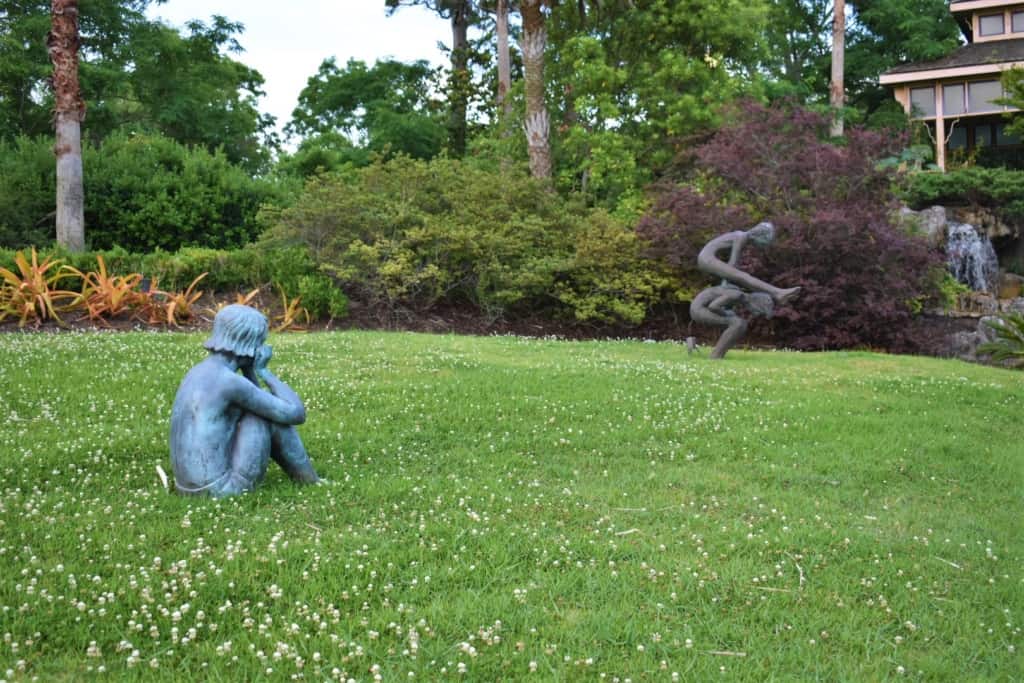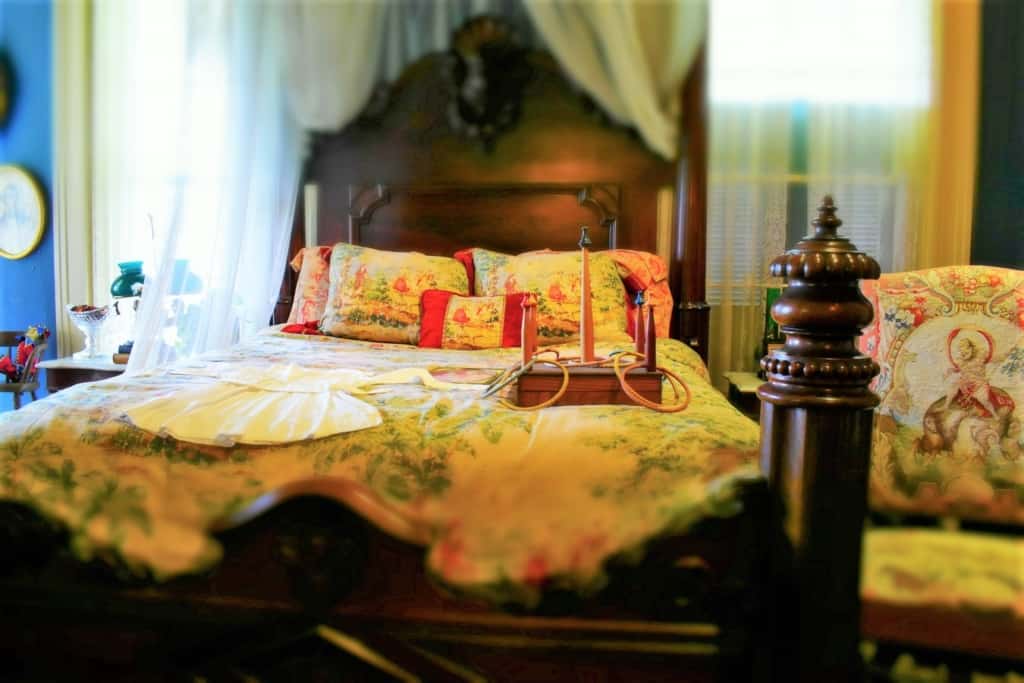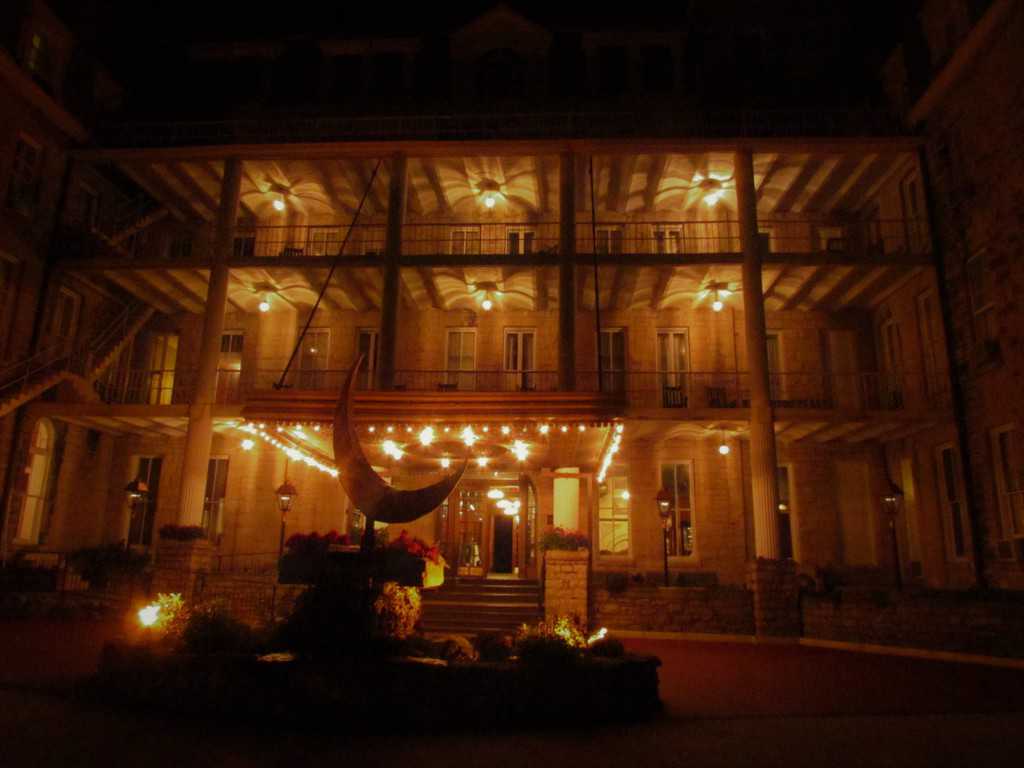The Mighty Mississippi River snakes its way through the River Parishes of southern Louisiana. Each twist and turn drags a bit more mud into the murky waters. Along its path, landowners carved out their segments of land that would grow into massive plantations. The use of enslaved labor would eventually be the downfall of the wealthy sugar barons. These days visitors can retrace the history of this region. Each plantation tells the story from a different perspective. We began our education at Houmas House, which is considered the crown jewel of the river road.
We want to thank the Louisiana River Parishes and Houmas House for their hospitality. Rest assured all opinions are our own.

Settling In
To really investigate the Houmas House, we were lodged in one of the quaint cottages located on the plantation grounds. Nestled under a canopy of shade trees, these cottages offer visitors the run of the grounds after regular business hours. Even with our late arrival, we would still have time to explore the gardens before settling in for the night. We were excited to begin our adventure at the crown jewel of the river road.

Getting Lost in the Views
Our first taste of plantation life was to immerse ourselves in the gardens at Houmas House. Arriving in late May, we found ourselves in a transition period. The Spring burst of color was transitioning to the cool tones of summer. The days were lengthening and with that comes the increase in temperature. Humidity is another reality that must be faced in the River Parishes. The evenings brought with them a cooling breeze that made our stroll through the gardens pleasant. Dotted all around the grounds is an assortment of statuary, both whimsical and traditional.

Hiding in Plain Sight
As the evening wore on, the waning sunlight gave way to darkness. Seeing the gardens by landscape lighting offered a new perspective of its beauty. The grand old oak trees, dripping with Spanish moss, rose-like giants from the ground. Seeing the Houmas House bathed in light gave us a new appreciation for its classic Greek revival architecture. Retracing our steps along the paved pathways, we discovered hidden gems that had escaped our earlier detection. After a little more exploring, it was time to settle in for some rest before our first full day of exploring in the Louisiana River Parishes.

Let’s Get this Tour Started
The land around the river is loaded with layers of sediments deposited over the ages. This has created a fertile delta that is perfect for growing sugar cane, corn, cotton, tobacco, indigo, and other crops. Today, the farming of these lands is a far cry from the plantation days of old. At its high point, the plantation was part of a 10,000-acre estate, but these days that has been reduced to around 38 acres. Long gone are the days of slavery and oppression, so visitors to the region will only find the remnants of the opulent lives that were gained off of the labor of others. By the start of the 20th century, the Houmas House had fallen into disrepair and was in danger of being lost to time.

Crown Jewel of the River Road
It was the promise of prosperity that drew people to this region. The early settlers quickly realized that taming the river would allow them to profit from the bounty of the land. Our tour at Houmas House was led by Susanna, who began it with the traditional bell ringing. This would give us our first glimpse inside of the stately structure. The entire compound was constructed over a period of years. Construction began in 1775, and it took until 1840 to reach its current size. Unfortunately, many of the traditional architectural features were removed, during the occupancy by a New Orleans doctor, in the mid-1900s.

Opulent Elegance
In 2003, a New Orleans businessman purchased the property with the intention of returning it to its previous stature. The goal was to recreate the plantation’s appearance in the mid-1800s. Our tour guide led us through the house, taking us from one elegant room to the next. It is hard to take in every aspect of a room, but it was clear that attention to detail was a high priority during the restoration process. We had relished in the comforts of our cottage but found the opulence of the main house to be unmatched.

The Games People Play
To truly showcase an entire period requires the inclusion of all parts of daily life. In the game room, we discovered a collection of artifacts that would have been used to entertain guests. This extravagant life was far removed from that experienced by the enslaved people, who kept the plantation running. Many of the slave quarters, which have long since been demolished, were mere shacks. Thousands of these would have been found in the South prior to the Civil War. Plantations faired a bit better, but there was also a considerable number that wasted away by the 1940s. At that time, a revival of the region’s history was instituted that saw a handful of plantations restored.

Amazing Architecture
Continuing our tour of this crown jewel of the river road, Susanna moved us to the base of one of the house’s most notable architectural features. The free-standing three-story helix staircase seemed oddly familiar. It was here that they filmed the murder mystery Hush…Hush, Sweet Charlotte, as well as numerous other productions. There have even been a few commercials shot on the grounds at Houmas House.

A Familiar Face
The current owner, Kevin Kelly, has directed a massive endeavor to recapture the original elegance of the home. Unfortunately, so many revisions had been made over the years that it is impossible to bring it back to the original. Since he actually lives in the house, he has incorporated some of his favorites in the décor. Being an avid dog lover, we spotted an assortment of dog-themed paintings throughout the various spaces. Being an art enthusiast, he has also included pieces that he has amassed over the years. One of my favorites was this small statue of Abraham Lincoln.

Summer Kitchen
As our tour of Houmas House was nearing its end, we made our way to the summer kitchen. These were a common necessity for homes in the south. You wouldn’t want to be heating up the main house during the summer months, so all of the chores that required a fire were moved out to these buildings. Our guide gave us a final bit of historical information before thanking us for our visit. This stop at the crown jewel of the river road had given us a base for understanding plantation owner life.

Taking It All In
Before we departed, we took another stroll around the grounds. It is impossible to take in all of the small details in such a short time. We continued our education of the history on plantations in the Louisiana River Parishes, with our groundwork complete. We knew it would be imperative to see it from all sides, so we planned visits to multiple plantations. Each one has their own story to tell, so it was important to listen closely to hear each story. But first, let’s just soak in this view for a little bit longer.






I love tours like this, what an amazing home and I loved the quirky garden, just the type of place I would love to explore.
We were surprised to find out that the current owner still resides in the home and even allows people to view his personal spaces.
What a fabulous find!! The photos are stunning!!
Thank you. The photos are only a reflection of the true beauty of the place.
Houmas House looks incredible! I love all the inside and outside art and the architecture. I’m going to Louisiana next Spring. I’ll have to look into visiting this place for sure!
We know you will love it as much as we did. Travel safely!
You have brought the history of Houmas house alive. I would love to visit the venue learn more about the plantations.
It has so much history, which makes it an educational experience.
We made a similar trip from KC to New Orleans and area stopping at places on both sides of the Mississippi River several years ago. Lots of natural and manmade beauty and history to experience. Enjoyed “revisiting” Houmas House through your visit and article.
So glad you have such fond memories. It is a beautiful destination.